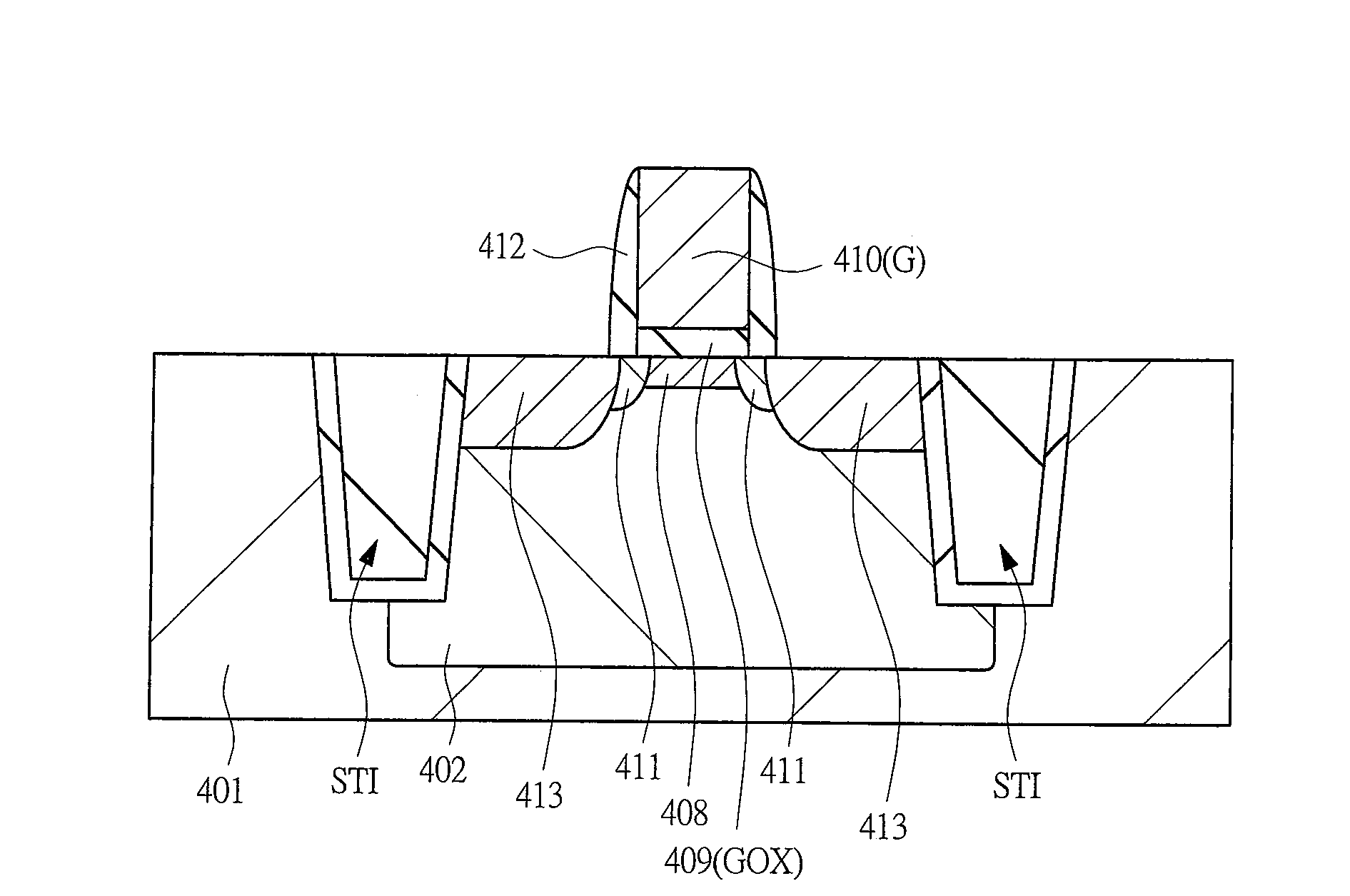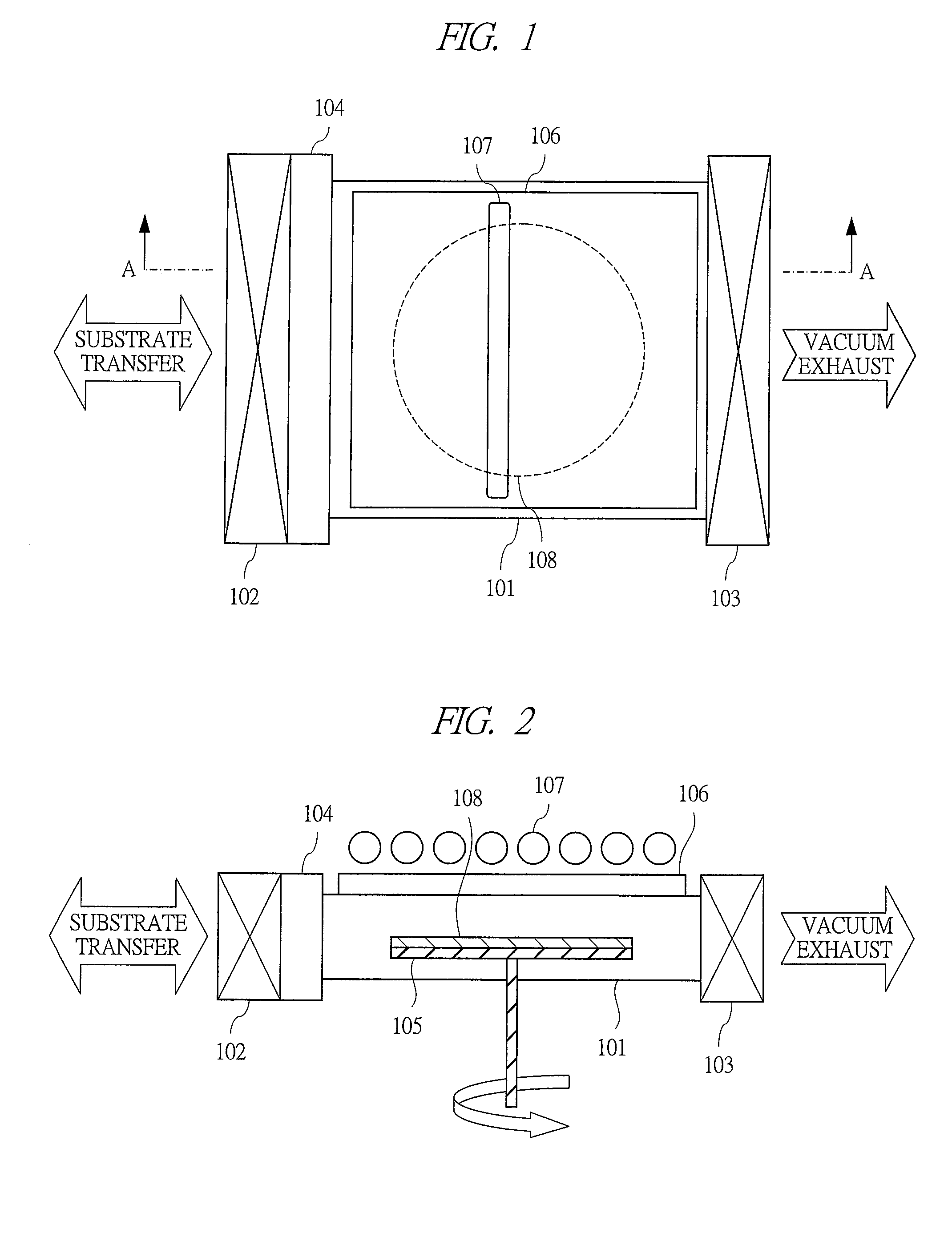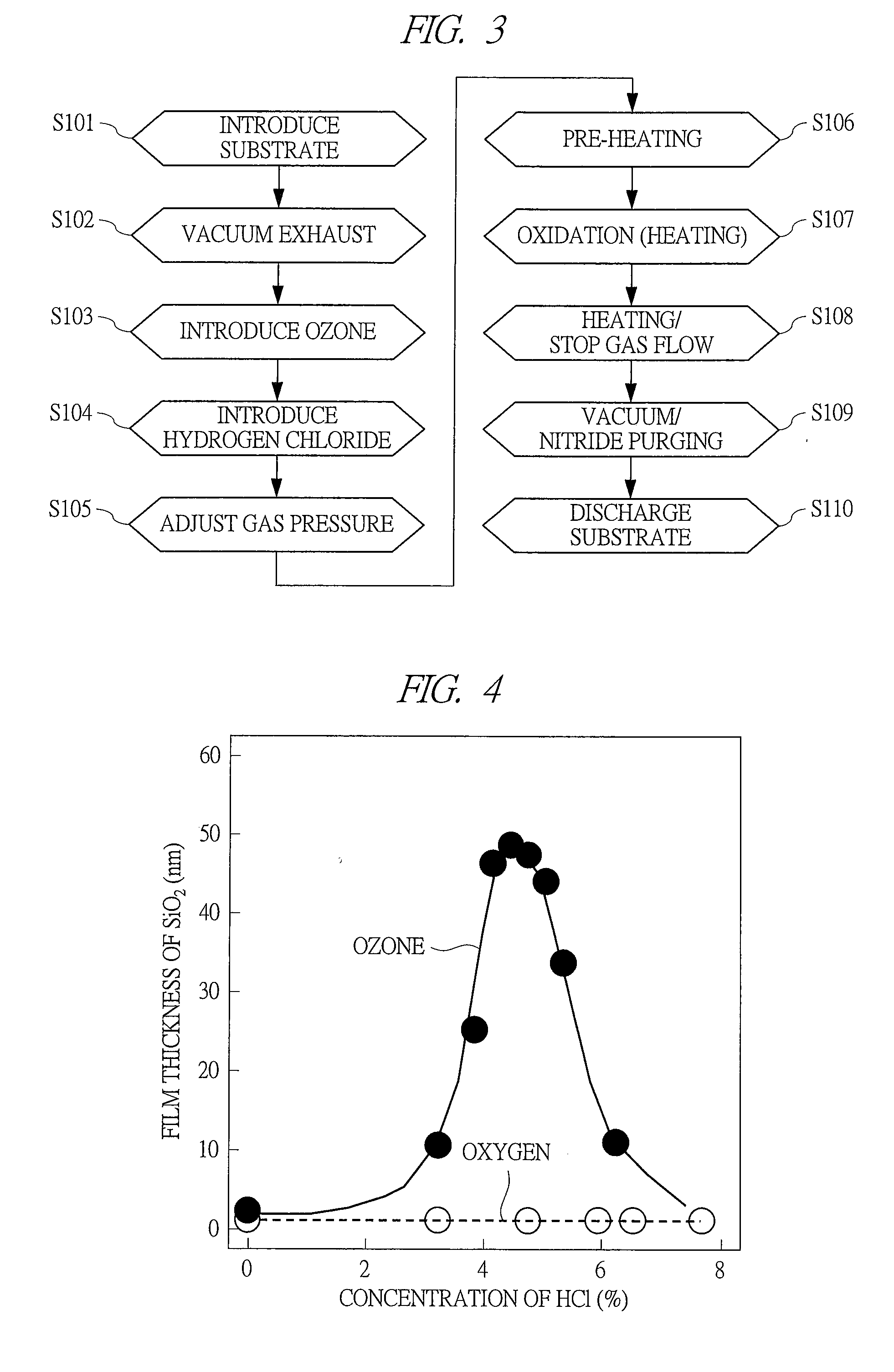Method of manufacturing semiconductor device
a manufacturing method and semiconductor technology, applied in the direction of semiconductor devices, electrical devices, transistors, etc., can solve the problems of reducing the threshold voltage at the end portion, reducing the oxidation rate, and prolonging so as to reduce the heat treatment time, reduce the diffusion of impurities, and reduce the heat treatment temperature
- Summary
- Abstract
- Description
- Claims
- Application Information
AI Technical Summary
Benefits of technology
Problems solved by technology
Method used
Image
Examples
first embodiment
[0060]Prior to describing embodiments of the present invention, a basic concept of the present invention will be described. The basic concept of the present invention lies in that a silicon oxide film is formed by thermal reaction made by generating a large amount of oxygen radicals having a large reactivity without using plasma. More specifically, in the case of using plasma, there are not only radical species but also ion species present in the plasma. Therefore, the formed silicon oxide film becomes prone to be damaged due to a sputtering phenomenon by the ion species during forming the silicon oxide film. From this reason, the formed silicon oxide film is frequently damaged in the method of using plasma, and it is thus difficult to form a highly reliable silicon oxide film. On the contrary, according to the present invention, a highly reliable silicon oxide film is formed by performing a thermal oxidation using oxygen radicals having a large reactivity and containing no ion spec...
second embodiment
[0088]Next, a second embodiment will be described in detail. Herein, a film thickness uniformity of a thermal oxide film (silicon oxide film) to be obtained in the second embodiment will be described. In the case of using the heat treatment apparatus (oxidation apparatus) illustrated in FIG. 1 and FIG. 2 to carry out a thermal oxidation method by ozone (O3) and hydrogen chloride (HCl), uniformity of the thermal oxide film greatly differs depending on a supplying method of the source gases (ozone (O3) and hydrogen chloride (HCl)). More specifically, in the case of supplying ozone (O3) and hydrogen chloride (HCl) from the gas introduction block 104 illustrated in FIG. 1 and FIG. 2, the thickness of the obtained thermal oxide film (silicon oxide film) is greatly changed depending on respective gas introduction positions and the number of introduction lines.
[0089]FIG. 8A and FIG. 8B are diagrams illustrating positional relationships of a semiconductor wafer (semiconductor substrate) and...
third embodiment
[0097]In the following, a thermal oxidation method according to a third embodiment will be described in detail with reference to the accompanied drawings. In the third embodiment, a single silicon substrate (resistivity: 10 Ω·cm) and a SiC substrate (4H) each having different orientations and a polycrystalline silicon film, a non-doped polycrystalline SiC film and a silicon nitride film (Si3N4 film) each having different impurities were prepared and each substrate or each thin film was oxidized in the same conditions, and a film thickness ratio of a silicon oxide film obtained thereby was evaluated.
[0098]The polycrystalline silicon film was formed by depositing a noncrystalline silicon film by a low pressure CVD (Chemical Vapor Deposition) method using disilane (Si2H6) as a source gas and then crystallizing the noncrystalline silicon film by a heat treatment. Disilane (Si2H6) and phosphine (PH3) were used for a phosphorus-doped noncrystalline silicon film, and disilane (Si2H6) and d...
PUM
 Login to View More
Login to View More Abstract
Description
Claims
Application Information
 Login to View More
Login to View More - R&D
- Intellectual Property
- Life Sciences
- Materials
- Tech Scout
- Unparalleled Data Quality
- Higher Quality Content
- 60% Fewer Hallucinations
Browse by: Latest US Patents, China's latest patents, Technical Efficacy Thesaurus, Application Domain, Technology Topic, Popular Technical Reports.
© 2025 PatSnap. All rights reserved.Legal|Privacy policy|Modern Slavery Act Transparency Statement|Sitemap|About US| Contact US: help@patsnap.com



